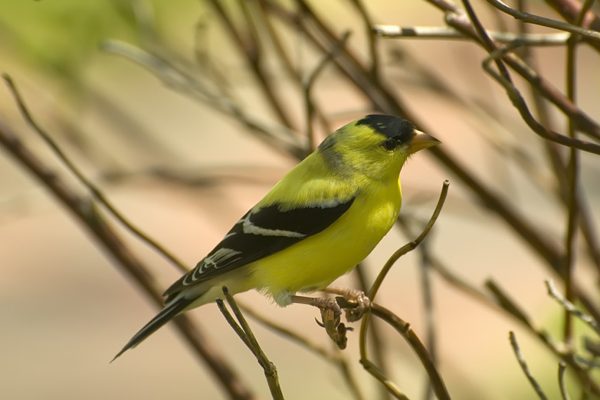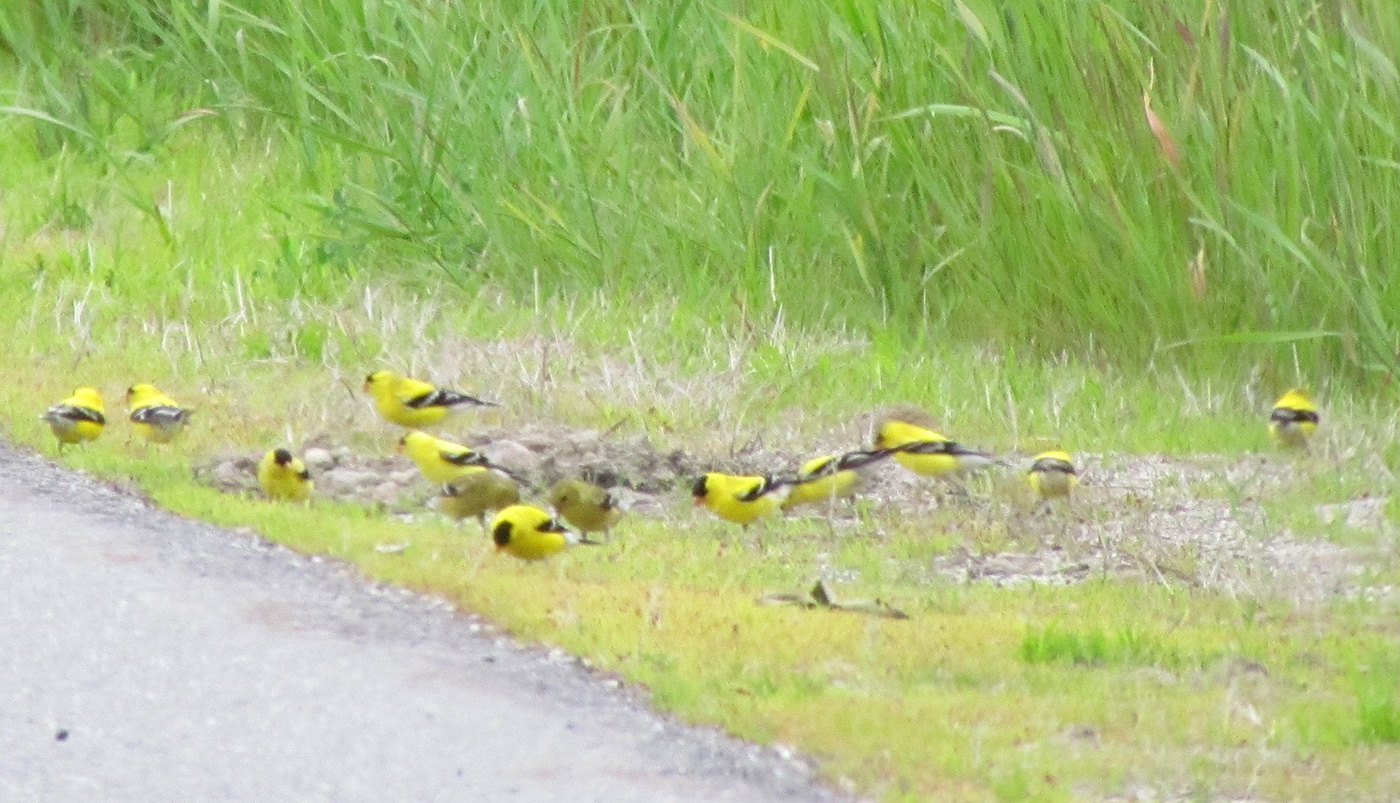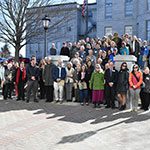Actually, if you don’t know which bird the “potato chip bird” is, then consider the subtitle “Six Surprising Facts.” And if you didn’t know that the potato chip bird, unlike most songbird species, form flocks in the non-breeding season, knock that cool factoid count up to seven.

The authors affectionately call the American Goldfinch the “potato chip” bird because of its call in flight. (photo by Tony Nazar)
Never mind, let’s just jump in.
You may or may not be aware, but most songbird species only flock up during the non-breeding season. American Robins, Red-winged Blackbirds, Common Grackles, even Blue Jays, to name but a few. In migration or in winter, these species can form flocks ranging anywhere from a dozen to hundreds—both Red-winged Blackbirds and Common Grackles can each wrangle into flocks well into the thousands.
During the breeding season, though, not so much. At least not for most bird species.
Not all bird species, however, followed the same blueprint. Last week, while out doing a little local birding, we stopped under the shade of a roadside tree at our favorite area grassland to listen to the sounds of summer breeding birds—bubbling vocalizations of Bobolinks, sizzling Savannah Sparrow songs, and, from the nearby bushes, the “sweet, sweet, sweet, I’m-so-sweet” of Yellow Warblers.
Soon we noticed that the gravel along the roadside was moving and had turned bright yellow! Actually, it was a flock of American Goldfinches jostling about the roadside with great purpose, perhaps picking up grit or salt. The flock consisted mostly of males in their vivid yellow-and-black breeding plumage, defying the “birds don’t flock up in summer” rule—there were a good two dozen of them in this striking roadside flock.

Most songbird species – like American Robin, Red-winged Blackbird, and Common Grackle like the one pictured here — flock up only during the non-breeding season. (David Small)
Whenever possible, we birders like to use mnemonics to describe the songs and calls of birds, as a way to remember and correctly identify their voices. Case in point: the Yellow Warbler above. This is how the “potato chip” bird got its name. We began referring to the American Goldfinch as the “potato chip” bird mostly because they have a common call that they frequently give in flight that sounds like “po-tato-chip, po-tato-chip,” as you can hear on this recording: https://on.soundcloud.com/9MjoKlMMwfE0qdjiUQ.
The American Goldfinch, or potato chip bird, is one of the most well-known and well-loved Maine birds, perhaps in part because it is ubiquitous across the state. It’s also a fan favorite across the U.S. and southern Canada, where its range extends to. Their showy color makes them easy to spot, and they’re fun to observe at the backyard feeder.
Now that you’ve got a little background about this species, how about a few more cool and surprising facts about the potato chip bird?
- Male American Goldfinches perform a breeding season flight display called Butterfly Flight in which he sings exuberantly while flying with slow, exaggerated wingbeats in a roughly circular pattern. Sometimes several males will engage in these displays in the same place, leading researchers to wonder if it is a form of breeding behavior in which the females choose males by observing them in competition with each other—the way guy humans will sometimes show for the ladies. We have seen a number of male American Goldfinches doing these Butterfly Flight displays in the last week or so.
- American Goldfinches are one of the latest birds to nest in our area, typically not starting until late June at the earliest. This may be because the species almost exclusively eat seeds and feed their young mostly seeds as well. A later start of summer nesting for them means there are more natural seeds available to them.
- Brown-headed Cowbirds lay their eggs in other birds’ nests so that they are raised by the hosts. When they try do this to the American Goldfinch, the choice backfires. Cowbirds rarely can survive on the diet of seeds that adult goldfinches provide for their own young. Cowbird chicks need insects, thus they are not likely to survive life as a fake baby goldfinch.
- The total number of American Goldfinches in North America at the start of the breeding season has been estimated to be more than 40 million, but they are also estimated to have declined by more than 25% since 1966.
- Unlike in many songbird species, researchers have rarely found banded young American Goldfinches anywhere near where they were hatched and raised. But adult females and males do typically return to the same location (or nearby) where they nested the previous year.
We hope you enjoyed learning more about the potato chip bird/American Goldfinch. We’ll leave you with this short video we took of an American Goldfinch: https://youtu.be/m-HfGtqRRA8?si=Yw1b5rslJbFvb22v

During a recent local birding trip, the authors were reminded that American Goldfinches, unlike most other birds, actually flock up in the breeding season. This flock was picking salt or gravel up from the road. (Photo courtesy of Jeff Wells)
—Allison and Jeff Wells











Leave a Reply